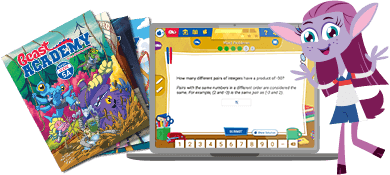Hexagon vs. Triangle
Slide coins to make your shape before your opponent can make theirs.
Instructions
Make the game board by tracing a coin.

Then arrange seven coins as shown.

Before playing, decide which player will attempt to make a 6-coin triangle, and which will attempt to make a 6-coin hexagon.


Players take turns moving a coin one space, or jumping a single coin to an empty space. (Either player can go first.) Whoever makes their shape first wins!
Play multiple rounds, alternating who plays triangle and who plays hexagon.
Don't forget: it's Beast Academy Playground, not Beast Academy Study Hall. Change the rules, be silly, make mistakes, and try again. The Variations and Learning Notes are here for you if you want to dive deeper, but not all of them apply to learners of every age. The most important thing is to have fun.
What do you think of this activity?
We're always looking to improve. Submit your feedback to us below.
- 7 coins (all the same type)
- paper
- pencil
- shapes
- strategic thinking
- spatial reasoning
- MP1
- K.G.A.2
- K.G.B.5
- 2.G.A.1
- 3.G.A.1

Ready to level up?
Keep problem solving with Beast Academy’s full math curriculum for students ages 6–13. Check out our captivating comic book series and immersive online platform.
LEARN MOREBring problem-solving to your classroom
Keep your entire class engaged with a full book and online math curriculum, for students ages 6–13. 98% of teachers say they’re satisfied with Beast Academy.
LEARN MORE



Ready to level up?
Keep problem solving with Beast Academy’s full math curriculum for students ages 6–13. Check out our captivating comic book series and immersive online platform.
LEARN MOREBring problem-solving to your classroom
Keep your entire class engaged with a full book and online math curriculum, for students ages 6–13. 98% of teachers say they’re satisfied with Beast Academy.
LEARN MORE
Sign up to be notified when new videos are released.

















































